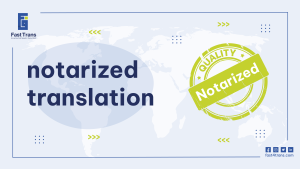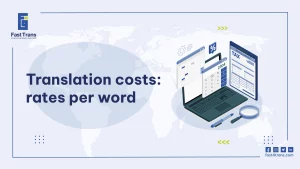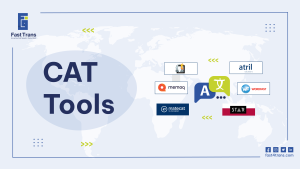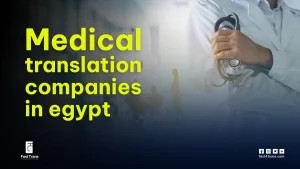A Translation Management System For Arabic streamlines the translation process by centralizing project management, automation, and quality control in one platform. It helps teams collaborate efficiently, ensuring consistency with tools like Translation Memory and term bases, which are essential for handling Arabic’s complex grammar and vocabulary. By automating repetitive tasks, tracking progress, and providing real-time oversight, TMS boosts productivity while maintaining cultural and linguistic accuracy, making it an invaluable tool for managing large-scale Arabic translation projects with precision and speed.
What Is a Translation Management System For Arabic?
A Translation Management System for Arabic refers to a platform that enables translators, editors, managers, and clients to oversee translation projects specifically for Arabic content in real-time, all from one centralized location.
The main function of the TMS is to facilitate project management, and it also integrates useful translation tools like Translation Memory (TM), glossaries, term bases, quality assurance (QA), and Machine Translation to help edit and automate Arabic translation processes.
In essence, a TMS for Arabic does two main things: managing Arabic translation projects and editing Arabic translations effectively.
The benefits of a Translation Management System For Arabic
A Translation Management System (TMS) streamlines Arabic translation by centralizing linguistic assets, automating repetitive tasks, and improving consistency. It aids in precise terminology management and project coordination, while ensuring quality assurance for Arabic’s complex grammar and script.
1. Storing of Linguistic Assets
In a TMS, linguistic assets include translation memories and term bases, which are stored in one central location. For Arabic, a Translation Memory (TM) becomes particularly useful given the language’s rich morphology and syntax. TM stores previously translated source and target segments, which helps to maintain consistency and speed when translating large projects with repeated phrases or terms. Arabic translations can benefit from TM’s ability to adapt to context, as well as its focus on preserving language-specific nuances, especially with words that change based on context or form.
A Term Base serves a similar function but is dedicated to terminologies. It ensures that specific Arabic terms are consistently translated, which is crucial in fields such as legal, medical, and technical translations, where precision is key. Translators can rely on the term base to ensure they use the correct and culturally appropriate Arabic terms throughout the document.
2. Project Managing
For project managers overseeing Arabic translation projects, a TMS provides invaluable tools for assigning tasks, monitoring real-time progress, and checking deadlines. Given the complexities of Arabic script and grammar, managing multiple translators working on different parts of the text can be challenging. TMS simplifies this process by offering real-time tracking and helping to ensure that deadlines are met, even for large-scale Arabic projects that require detailed attention to linguistic and cultural elements.
3. Saving Time Through Automated Tasks
One of the key goals of TMS is to reduce unnecessary efforts, particularly those that are repetitive and could be automated. In Arabic, where linguistic structures can differ significantly from other languages, automating tasks can save valuable time. TMS tools can automatically provide a segmented version of the Arabic source text, removing untranslatable elements, while also assisting with repetitive translations by leveraging translation memories or machine translation.
For example, in Arabic, words can change based on grammatical gender, tense, and pluralization, making automation essential for maintaining consistency across various document segments.
4. Running Quality Assurance
A major benefit of using a Translation Management System is its built-in quality assurance features, which help ensure the accuracy of translations. For Arabic, these features are particularly important as the language contains complex grammar, spelling, and punctuation rules. TMS can automatically check for spelling mistakes and grammatical errors, which is crucial when working with Arabic’s unique script, its diacritical marks (which affect pronunciation and meaning), and its right-to-left orientation. The quality assurance process ensures that the final Arabic text is free from errors, maintaining both linguistic and cultural correctness.
What can I do with a Translation Management System?
A Translation Management System (TMS) enables efficient oversight of translation workflows, facilitating real-time collaboration and project monitoring. It stores assets like glossaries, automates content segmentation, integrates with other platforms, and helps track translation costs.
1. Supervise and Monitor Translation Projects
As a project manager or a client you can oversee all aspects of the project in real time. TMS allows for the collaboration between PMs, translators, linguists, and editors.
2. Store Translation Assets:
A big part of the TMS can store, and manage content like glossaries, and translation memories. These have a role in maintaining translation consistency.
3. Segment Translation Files:
TMS aids translators by automatically segmenting the source text into smaller chunks of phrases and sentences to make the process more user-friendly and error-free.
4. Integrate with Other Tools:
Some translation management systems allow for the integration with other tools like content management systems (CMS), it also has the ability to connect with other tools like WordPress.
5. Manage Costs:
TMS tracks costs associated with translation projects.
read more about translation costs per word count rate
What are some common features of translation management systems?
With the above being said, let’s sum up the top TMS features:
- User set up and interface: file format support and scalability that allows different file sizes.
- Team collaboration tools.
- Editing assistance tool: like glossaries, and guidelines.
- Automation features: machine translation, term memory, quality , and translation memory.
- Visual context: This is needed when translating video subtitles that sometimes rely on context to achieve more accuracy.
The value of a TMS for global organizations
Translation management systems are crucial for organizations. Imagine having to deal with tons of files, and navigating projects individually over separate project managing platforms? TMS provide a shorter work around!
Firstly, translation management systems have been proven to increase turnaround, allowing for finishing projects and meeting deadlines. Consequently, TMS could contribute significantly to increased revenue.
Moreover, they come in handy when trying to minimize costs.
How is that?
When a project has many repeated segments in the source text, translation memory could take care of those depending on its reservoir of previously translated segments, which means less effort for the translator and minimized costs for the client.
TMS bring different employees in one easy-to-navigate interface.
Lastly, TMS are scalable because they deal with different file formats and sizes. They are suitable for individual use, small businesses, and large companies.
Kinds of Translation Management Software / How to Choose
Translation management software comes in various forms, including cloud-based, on-premises, open-source, enterprise, and freemium options, each tailored to different organizational needs, from scalability to customization. Choosing the right solution depends on factors like budget, size, and required features.
1. Cloud-Based TMS
This is one of the most favorable types of TMS. It is hosted on remote servers and can be accessed online at any time.
2. On-Premises TMS
On-premises TMS is installed and operated on the company’s own servers and infrastructure. Although it is great for companies, yet some avoid it for its high cost.
3. Open-Source TMS
As the name suggests, open source TMS are customizable. They can withstand alterations for each organization to fit its needs. Companies can also get a fully customized TMS catered specifically for them.
4. Enterprise TMS
Enterprise TMS is designed for large organizations with complex translation needs. This type of TMS offers advanced features such as workflow automation, integration with other systems, and scalability to handle large volumes of translation projects.
5. Free TMS
Freemium TMS offers basic features for free, with the option to upgrade to a premium version for additional features and functionality. This type of TMS is suitable for small businesses or individuals with limited translation needs.
How to Choose your TMS?
The type of translation management system you choose depends on several factors:
- Volume of language assets.
- The number of language pairs and regions that need to be included.
- The number of persons or parties handling the project on the system.
- Requirements regarding brand tone, diction, and style.
- The number of platforms and mediums that require localization such as: websites or applications.
Fast Trans TMS and how it will help you
If you are on the hunt for the suitable TMS for you, contacting a reputable translation company that has years of solid expertise with TMS can save you lots of effort and money.
Fast Trans could not miss out on the monumental features of the translation management systems along with various translation software tools that maximize translation productivity.
Get in touch with us to know more about TMS we use in our projects, or we could help you decide on purchasing the suitable one for your business.
Conclusion
A Translation Management System For Arabic is a centralized platform designed to streamline the management of Arabic translation projects. It brings together translators, editors, and project managers to handle tasks such as editing, automating, and overseeing translations. By integrating tools like Translation Memory (TM) and term bases, the system ensures consistency and accuracy, especially in languages like Arabic, which has complex grammar and vocabulary. TMS enables real-time monitoring, collaboration, and quality control to manage the intricacies of Arabic translations, ensuring that they maintain linguistic and cultural integrity.
For Arabic translation projects, a TMS offers several benefits. It stores valuable linguistic assets, such as translation memories and term bases, which help maintain consistency, particularly when dealing with repetitive content. The system also aids in project management, tracking deadlines and progress across multiple translators, while automation reduces repetitive tasks, saving time. Built-in quality assurance features check for errors in Arabic grammar, spelling, and punctuation, ensuring high-quality results. Overall, TMS for Arabic is essential for improving efficiency, maintaining accuracy, and reducing costs in translation projects.




